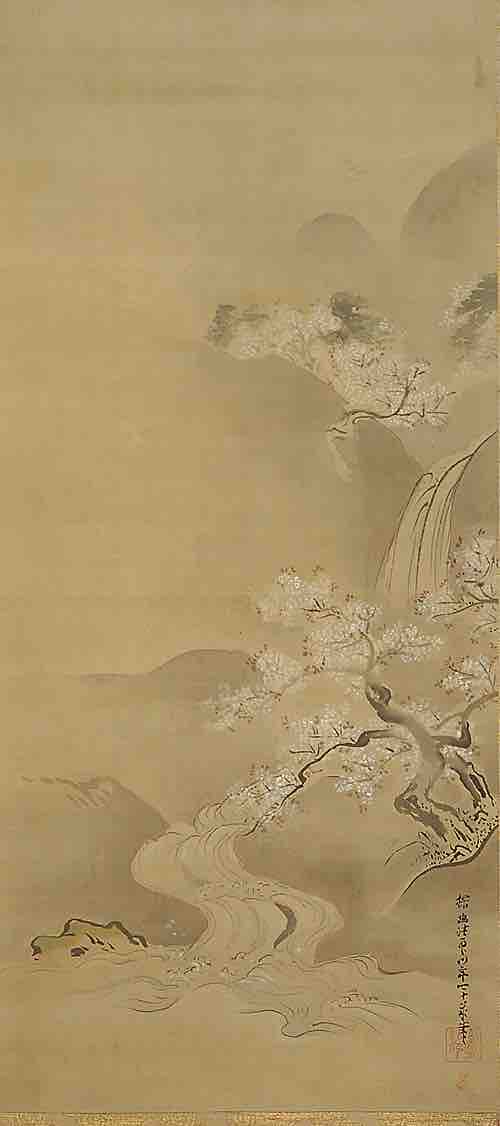Overview: The Kanō School
The Kanō school (狩) was the dominant style of painting during the Edo period. The Kanō family itself produced a series of major artists over several generations, and a large number of unrelated artists trained in workshops of the school. Some artists married into the family and changed their names, while others were adopted, creating a family known for its artistic innovations.
The Style of the School
The school began by reflecting a renewed influence by Chinese painting, and it continued to produce monochrome brush paintings in the Chinese style over the years. However, it simultaneously developed a brightly colored and firmly outlined style for large panels, which reflected distinctively Japanese traditions. Kanō Motonobu, a Japanese painter and member of the Kano School, is particularly known for expanding the school's repertoire through his bold artistic techniques and patronage. Many of the works during this period combined the forceful quality of work from the earlier Momoyama period with the tranquil depiction of nature and more refined use of color typical of the current Edo period.
The school was supported by the Shogunate, effectively representing an official style of art; under the Edo period in which art and culture were strictly regulated, this essentially monopolized the field of painting. The Kanō school drew on the Chinese tradition of literati painting by scholar-bureaucrats, but the Kanō painters were firmly professional artists: they were very generously paid if successful and received formal workshop training in the family workshop (similar to European painters of the Renaissance or Baroque period). Kanō painters worked primarily for the nobility, shoguns, and emperors, covering a wide range of styles, subjects, and formats. While initially innovative, from the 17th century onward, the artists of the school became increasingly conservative and academic in their approach.

Kanō Tan'yu, Spring Landscape (1672)
Tan'yū headed the Kajibashi branch of the Kanō school in Edo and painted in many castles, including the Imperial palace. He used a less bold but extremely elegant style, which tended to become stiff and academic in the hands of less-talented imitators.
The range of forms, styles, and subjects that were established in the early 17th century continued to be developed and refined without major innovation for the next two centuries. Although the Kanō school was the most successful in Japan, the distinctions between its work and the work of other schools tended to diminish over time, as all schools worked in a range of styles and formats, making the attribution of unsigned works often unclear. By the end of the Edo period and the beginning of the Meiji period (1868), the Kanō school had divided into many different branches.